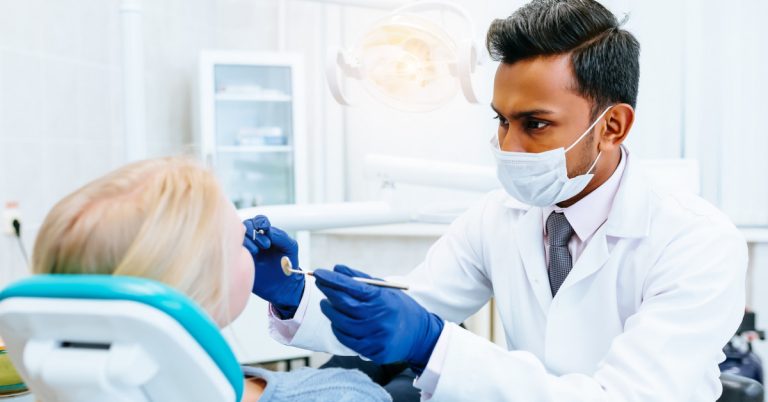Recall intervals for oral health in primary care patients
Lead author Patrick Fee explains: “This research is valuable when considering the significant impact of the global COVID-19 pandemic and its impact on dental services worldwide, limiting patient access to dental treatment. Patient access to dental care may remain limited for some time. However, the results of this review provide reassurance to those providing and seeking dental treatment that intervals between check-ups can be extended beyond six months without harming patients’ oral health.
This review finds that a risk-based screening is not harmful to oral health and is acceptable to patients. There has been a long-standing international debate about the optimal frequency of dental check-ups, and this review includes the most up-to-date and robust evidence available to investigate this issue. But it must be emphasized that these are adults who have regular checkups, not those who need to seek emergency treatment or children.”
Why should I have a dental checkup?
A dental checkup helps keep your mouth healthy and allows your dentist to see if you have any dental problems. It allows your dentist to address any problems early, or better yet, to prevent problems from developing. Leaving problems untreated can make them more difficult to treat in the future.
What happens at a check-up?
At each checkup, your dentist will usually:
- examine your teeth, gums and mouth.
- Ask about your general health and if you have had any problems with your teeth, mouth or gums since your last checkup.
- advises you on your teeth cleaning habits and diet, smoking and alcohol use.
- if necessary, recommend treatment needed for any dental problems.
After the check-up, the dentist will recommend a date for the next check-up. Traditionally, checkups are recommended every six months. However, some people are at greater risk of developing dental problems and may need more frequent checkups, while others may not need checkups as often.
Why the team did this Cochrane review
Getting a checkup every six months can help keep your mouth healthy and prevent future dental problems, but it could also lead to unnecessary dental treatments. However, less frequent checkups can worsen dental problems and lead to difficult and expensive treatment and care. The team of authors wanted to determine the best time interval between dental checkups.
What did the writers do?
They looked for studies that looked at the effect of different time intervals between dental check-ups. The authors searched for randomized controlled trials, in which subjects were randomly assigned to different intervals. These studies usually provide the most reliable evidence.
Search date: included evidence published up to 17 January 2020.
What did the authors find?
The authors found two studies with 1736 people who had regular dental checkups. A study was carried out in a public dental clinic in Norway in children and adults under 20 years of age. It compared 12-month and 24-month examinations and measured the results after two years. The other study was done on adults in 51 dental practices in the UK. It compared six-monthly, 24-monthly and risk-based checks (where the time between checks depended on a person’s risk of dental disease) and measured results after four years.
The studies looked at how different intervals between checks affected:
- how many people had tooth decay?
- how many tooth surfaces were affected by caries?
- gingivitis (rate of bleeding spots on the gums). and
- quality of life (well-being) related to having healthy teeth and gums.
No studies measured other potential side effects.
What are the results of the review?
In adults, there was little or no difference between the six-monthly and risk-based tests for caries (number of tooth surfaces affected), gum disease and well-being after four years. and possibly little or no difference in how many subjects had moderate to extensive caries.
There was probably little or no difference between 24-monthly and six-monthly tests or tests based on caries risk (number of subjects and number of tooth surfaces affected), gingivitis or well-being, and there may be little or no difference in how many subjects had moderate to extensive caries.
The authors did not find sufficiently reliable evidence about the effects of the 12-month and 24-month checks in children and adolescents after two years. This is due to problems with the way the study was conducted.
How reliable are these results?
They are confident that there is little or no difference between six-monthly exams and risk-based exams in adults for the number of tooth surfaces with caries, gingivitis and well-being. They are moderately confident that there is little or no difference between 24-monthly checks and six-monthly or risk-based checks in the number of tooth surfaces with caries, gum disease and well-being.
conclusions
Whether adults see their dentist for checkups every six months or at individualized intervals based on their dentist’s assessment of dental disease risk does not affect tooth decay, gum disease, or well-being. Longer intervals (up to 24 months) between checks may not adversely affect these results. Currently, there is not enough reliable data available about how often children and teenagers should visit their dentist for a check-up.

